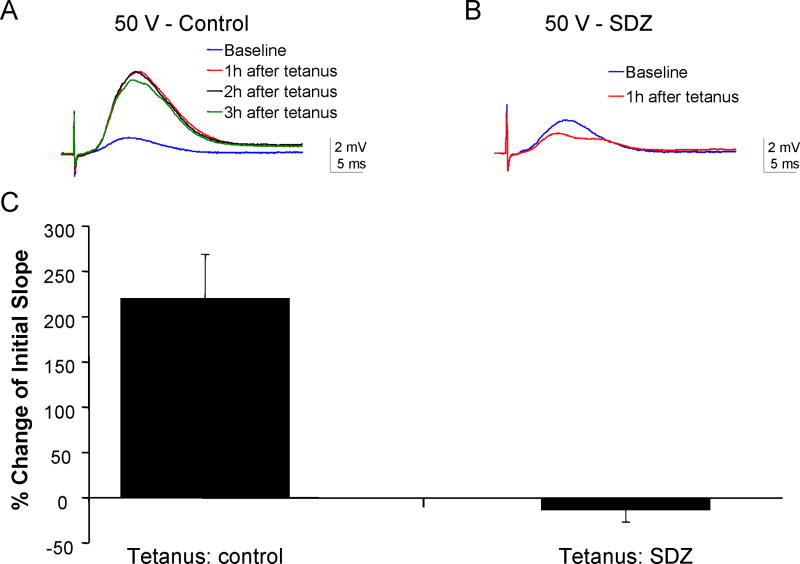Figure 1.
Administration of the nonselective competitive NMDA antagonist SDZ prior to tetanic stimulation induces depotentiation in vivo in naïve rats anesthetized with urethane. A: In acute whole-animal recordings from the CA1, tetanic stimuli induced long-term increases in the slope of the fEPSP evoked at 50 V (220 ± 90 % of baseline, n=3). This increase persisted for 2 h after the tetanic stimuli. B: Subsequent administration of SDZ (3.2 mg/kg, IP) 2 h prior to a second tetanic stimuli caused the maximal slope of fEPSPs evoked at 50 V to decrease by 13 ± 7 % for at least 2 h compared to the response prior to the second tetanus in SDZ, consistent with induction of depotentiation (n=2). C: The bar chart illustrates the summary data for 50 V stimuli 2 h post-tetanus.

